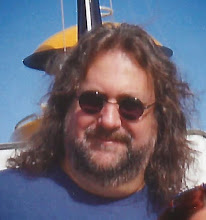 Hawk & the Dove #6 (On Sale: April 24, 1969) has a nice cover by Gil Kane.
Hawk & the Dove #6 (On Sale: April 24, 1969) has a nice cover by Gil Kane.The full-length Hawk & the Dove strip, "Judgment in a Small, Dark Place." is written and penciled by Gil Kane and inked by John Celardo. One night Hank and Don get to their father's office just in time to scare off a would-be kidnapper. Hank chases the bad guy as Hawk, but loses him when momentarily blinded by a passing car. The judge is unharmed, but none of them got a good look at the attacker and the judge warns the boys not to worry their mother over the incident. The next day the boys return home from school to find their house in shambles and their mother unconscious on the floor.
She had only fainted and when she comes to she says she interrupted a man kidnapping their father. Hank once again takes off alone and scours the city as Hawk looking for information on his father. He does it by busting a few heads till he learns of a hood named Max Leland who was bragging that he was going pay the judge back. Hawk breaks into Leland's apartment and more head-busting ensues.
Meanwhile Don has been scouring his father's files looking for clues and finds a chart with a familiar face, a man named Karl MacArthur who died in prison. Don realizes that they had a part-time gardener named Arthur who looked a lot like MacArthur. Don leaves and as Dove tracks down Arthur's home in the country. Snooping around he finds Arthur is holding his father in a small cage in his basement.
Hawk has gotten from Leland a description of a man he says jumped Judge Hall before Leland himself got a chance. From the description Hank realizes it is their old gardener Arthur and heads out after him. By eavesdropping Dove learns that since his father died in a cell that Judge Hall put him into, Arthur plans on seeing that the Judge is given the same fate. Dove sees that all of the windows in the house are fitted with alarms so he shimmies up the nearby power poll to cut the electricity to the house.
From that perch Dove sees Hawk running toward the house and smashing through the door. Dove cuts the lights and a fight ensues in the dark. When the lights are switched back on Hawk makes quick work of Arthur. On the final page the Judge rails against the Hawk and the Dove for endangering his life, thinking for certain that he could have talked Arthur out of it eventually without any dangerous gun play.
Hank and Don leave for school and Hank laments that maybe their father is right, maybe they should give up being the Hawk and the Dove. Maybe the whole idea of being super-heroes was a mistake. The final caption reads, "Is this the end of the Hawk and the Dove??"
It was for this book anyway. Over the next year they would appear as guests in the Teen Titans and then disappear for six years only to show up in the Teen Titans again for a three-issue run. They would make eight appearances in the 1980s before disappearing once again. Was this a concept book that was too much concept and not enough book? Maybe, though I do recall a wonderful Hawk and Dove story in Brave and the Bold years later by Alan Brennert that seemed to bring merit to the idea of the two polar-opposite brothers. I always liked the book myself, always liked the characters.
This was John Celardo's second inking job for DC, but his first in 20 years! Celardo last worked for DC in 1949 inking a Johnny Peril story in All-Star Comics #48. He started his professional career contributing sports cartoons to Street and Smith publications in 1937. He soon turned to comics, and went to the Eisner-Iger studios.
There, he did Dollman, Wonder Boy, Uncle Sam, Paul Bunyan, Espionage, Hercules, Old Witch and Zero Comics, sometimes working under the pseudonym John C. Lardo. From 1940 he also worked for Fiction House, where he drew Hawk, Red Comet, Powerman, Captain West and Kaanga. After the War, he continued his work at Fiction House, illustrating Tiger Man, Suicide Smith and others.
In the 1950s Celardo succeeded Bob Lubbers on the daily Tarzan newspaper strip. In the 1960s he also took on the writing of the Tarzan strip and introduced many new characters from outside and inside the jungle, such as Red Chinese spies. In the late 1960s, he took over The Green Berets from Joe Kubert and Davy Jones from Sam Leff and Alden McWilliams.
John Celardo would ink this one story, pencil three others and then again disappear from DC. He returned to free-lancing and did such titles as Believe It or Not for Western. In 1973 he became comics editor at King Features and stopped drawing altogether. In 1977 he would return to DC and ink over 50 stories during a seven-year span. He returned to penciling in the 1980s taking over the Buz Sawyer newspaper strip
His inking on this Hawk and Dove story was very nice and silky smooth, an interesting contrast to Gil Kane's angular faces. I would have liked to see more of this combination.
Edited by Dick Giordano.



No comments:
Post a Comment